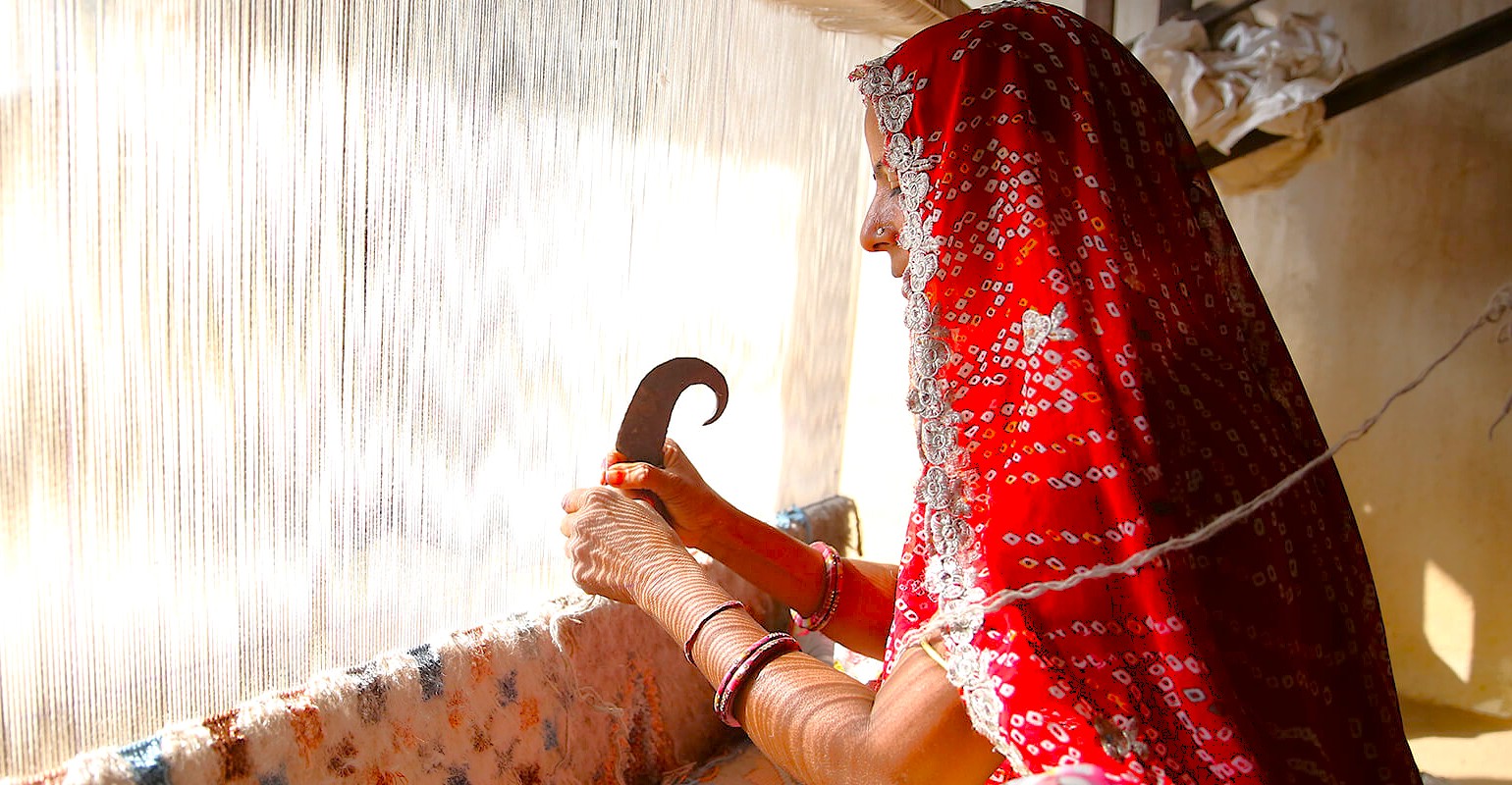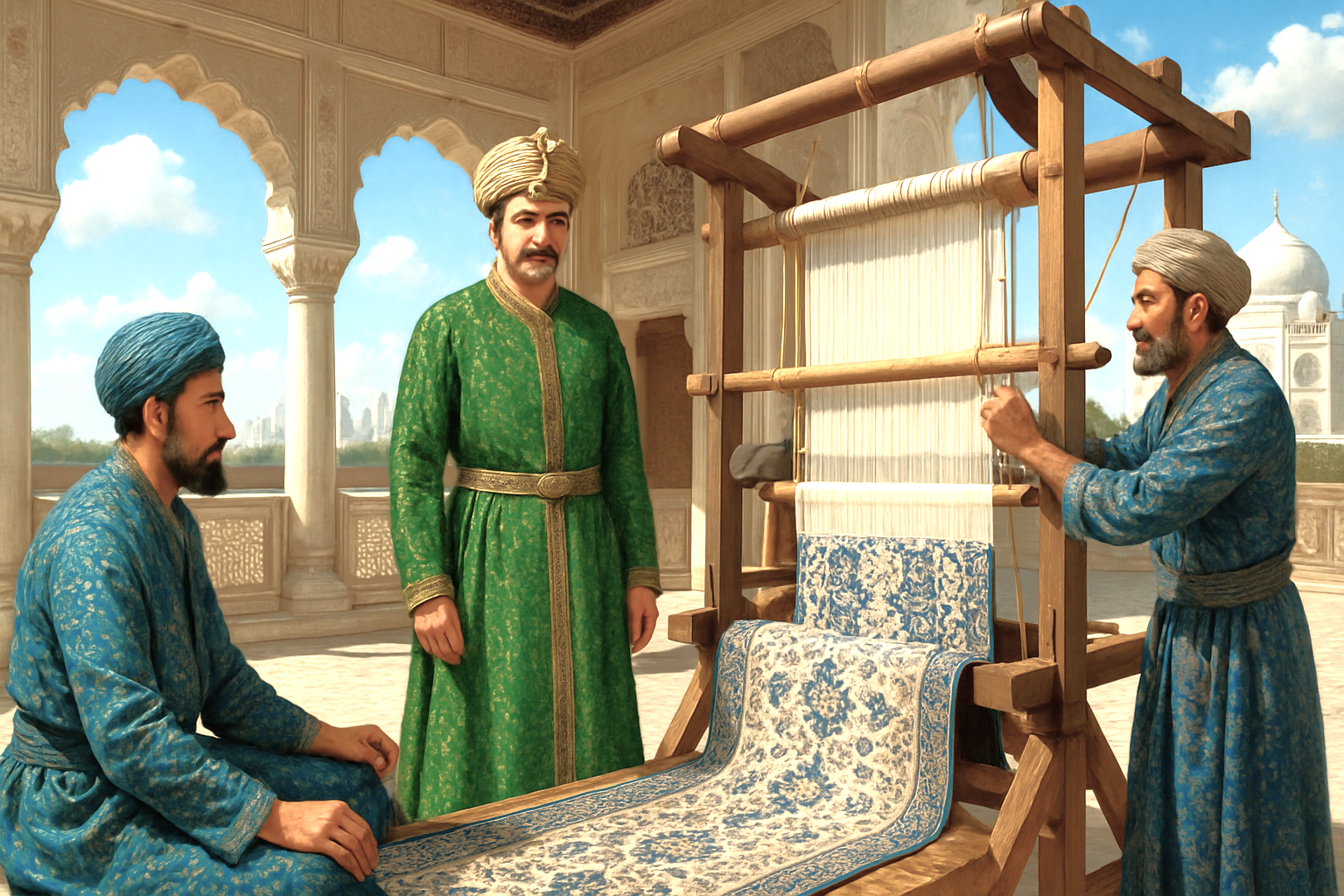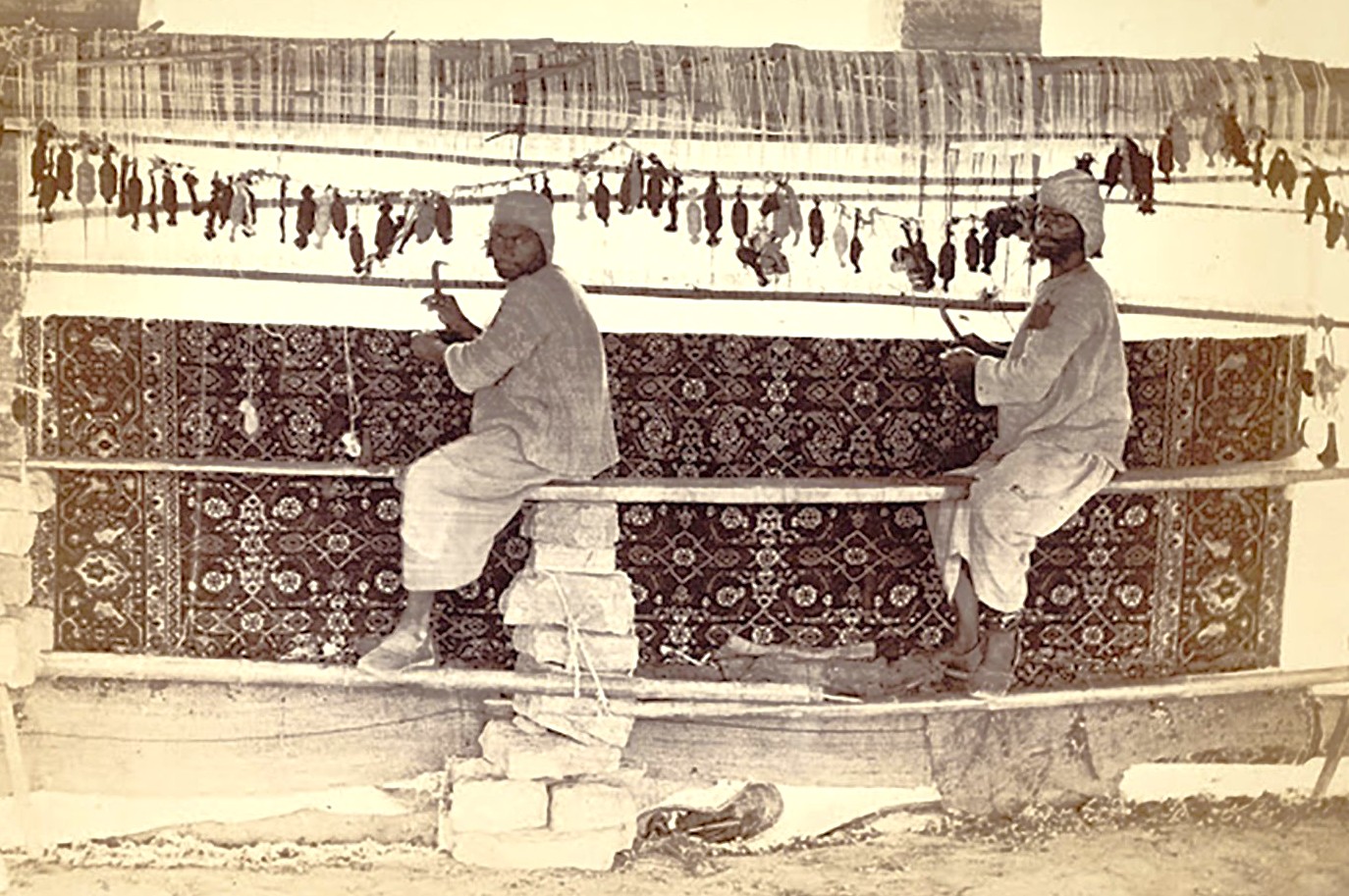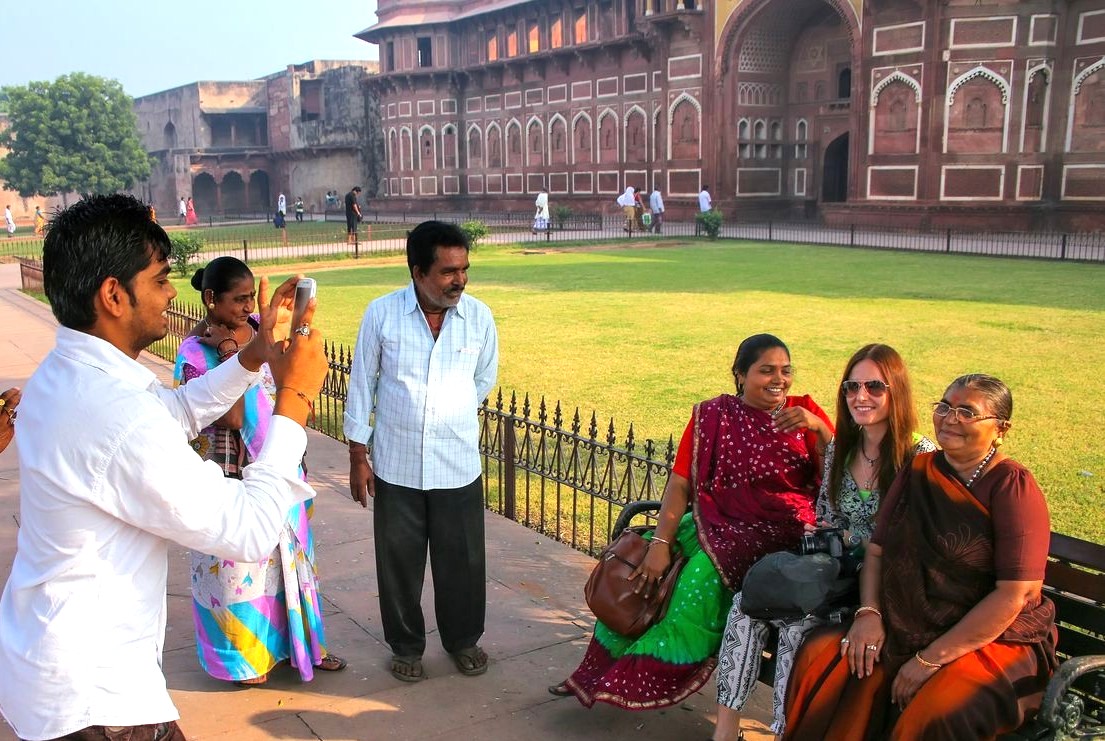Spirit of India
Carpet Weaving: Agra
Mother Masala Tours
Before Textiles: Earth and Skin: Carpet Weaving Agra
Carpet Weaving Agra. Before the discovery of weaving textiles, ancient Indian's relied on natural materials directly from their environment. Animal hides, carefully tanned and preserved, provided essential coverings for both body and dwelling spaces. Tree bark, stripped and pounded into malleable sheets, created primitive floor coverings in sacred spaces. Reeds and grasses were interlaced by hand to form simple mats, precursors to what would later become woven textiles. These early floor coverings lacked durability but represented humanity's first attempts to transform raw materials into functional items. Evidence from the Indus Valley civilization suggests the use of leather and plant fibers as early as 5000 BCE, long before the knowledge of spinning fibers into thread revolutionized material culture.

Soul Threads of Tradition
Carpet Weaving Agra. The art of carpet weaving in India traces its origins to ancient times, though the modern tradition we recognize today began in the 16th century. While basic flat-woven dhurries existed for centuries as versatile household textiles, the intricate pile carpets that brought fame to Indian weaving were introduced during the Mughal era. These early dhurries served multiple purposes - from meditation mats to bed coverings - and were traditionally crafted by women of the household, often given as dowry gifts to brides. These humble textiles were typically made from cotton or wool, featuring simple geometric patterns passed down through generations. Their creation was a domestic ritual, deeply embedded in rural life, reflecting a communal skill that predated the commercial workshops of the later dynasty.
Akbar's Visionary Invitation: Carpet Weaving Agra

In 1580 AD, a moment redefined India's textile landscape forever. Emperor Akbar, a connoisseur of the arts, held a deep admiration for the beauty and intricate artistry of Persian carpets. Recognizing a unique opportunity to elevate his empire's craftsmanship, he extended a royal invitation to master weavers from Persia, welcoming them to his Agra court. Akbar established dedicated imperial workshops in Agra, Delhi, and Lahore, creating hubs of innovation for these newly arrived artisans. By providing them with royal patronage and resources, he catalyzed the birth of the pile carpet industry in India. The blend of Persian technique with Indian aesthetics introduced revolutionary methods, setting a new standard for artistry across the subcontinent.
Heart of Textile Innovation
Agra emerged as the primary center of this new weaving tradition, directly receiving the Persian influence brought by Akbar. The city quickly developed its own distinctive style that merged Persian techniques with Indian artistic sensibilities. What made Agra carpets unique was their integration of asymmetrical knotting methods, which improved durability and allowed for more intricate designs than previously possible in Indian textiles.
Artistry Behind Prison Walls

In a fascinating and unexpected historical twist, Agra’s colonial-era jails became unlikely centers for artisanal excellence. The British administration introduced carpet weaving as a structured, reformative activity, a way to impart a valuable vocational skill upon the inmate population. Prisoners meticulously learned this complex craft, their days spent patiently tying thousands of intricate knots on large, imposing looms. The resulting "Agra Jail carpets" gained recognition for their truly exceptional quality, complex designs, and durable construction, often rivaling those made in traditional workshops. This surprising practice transformed carceral punishment into a unique form of skilled training, creating master weavers from the most unexpected circumstances.
Mughal Dynasty's Artistic Patronage
The development of carpet weaving in Agra benefited tremendously from consistent royal patronage. After Akbar's initial support, later Mughal emperors continued to champion the craft. Shah Jahan, builder of the Taj Mahal, particularly emphasized luxury carpets, encouraging the use of rich materials and elaborate designs. This royal endorsement established carpets as essential elements in palaces and noble homes.
Fibers of Timeless Quality

The legendary quality of Agra carpets begins with their exceptional fibers. The finest examples utilized premium, hand-spun wool and glistening silk, creating textiles prized not only for their intricate visual appeal but also for their luxurious, resilient texture. The wool, often sourced from the hardy sheep of surrounding regions, was rich in natural lanolin, which provided remarkable durability and a subtle, soft sheen to the pile. The fibers were colored using only natural dyes. Artisans extracted enduring hues from indigo, madder root, and turmeric. , a painstaking process that resulted in a rich, harmonious palette. These organic pigments gave Agra carpets their characteristic depth.
Under British Colonial Influence
During the British colonial period, Agra carpets found new markets and influences. British tastes affected some design elements, while the colonial administration recognized the economic potential of this craft. Workshops expanded to meet growing European demand, though this period also saw increased standardization of patterns to satisfy Western preferences for "authentic" Oriental carpets.
Families Preserving Ancient Knowledge
Behind the carpet tradition stood multi-generational weaving families who passed their knowledge through careful apprenticeship. Young weavers spent years mastering basic techniques before advancing to more complex patterns. These tight-knit communities preserved ancient knowledge through oral tradition and practical demonstration, maintaining quality standards through rigorous training and supervision.
Palaces, Parathas, and Pure Joy
Join us - see what we experience in Agra. From the moment you step inside, you’re greeted by the gentle, rhythmic click-clack of the looms. We sit mesmerized, watching the weavers’ hands move with a speed and grace that seems almost impossible. We see them tie thousands of tiny, perfect knots, transforming colorful threads of silk and wool into breathtaking patterns right before your eyes. It’s an intimate and authentic experience. You get to meet the artisans, share a smile, and feel the passion they have for their craft. This isn’t just a demonstration - it’s a genuine connection to a living tradition. You’ll leave with a profound appreciation for the human story and incredible skill woven into every single carpet.
The Symphony of Exchange's

Experience the magic of Agra carpets firsthand during your visit! Witness the exquisite craftsmanship of local weavers who breathe life into this age-old tradition. For generations, artisan families have poured their hearts into creating these masterpieces, blending intricate designs with vibrant natural colors. Watching them weave is like stepping into history, sharing an intimate moment of skill and devotion. When you purchase an Agra carpet, you take home more than a beautiful piece of decor – you carry a story. These carpets are functional works of art, infused with heritage and humanity, meant to bring beauty and meaning to your spaces. It's more than a transaction – it's a connection. Join us to explore this timeless craft, meet its creators, and be part of a dialogue that celebrates art, culture, and history.